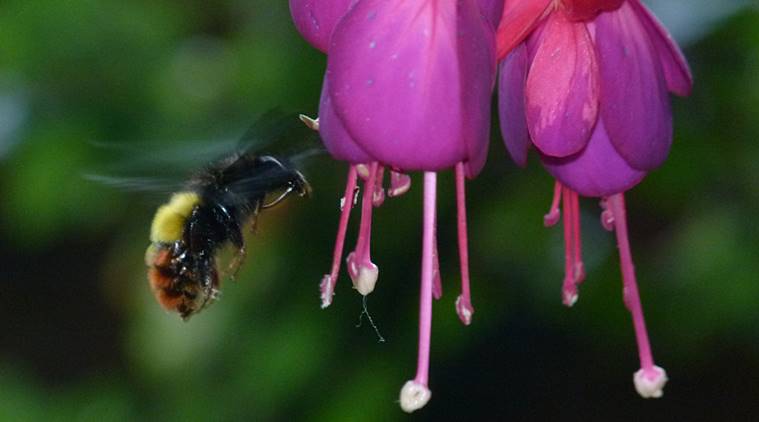
Every time an election comes around, the god-fearing and the finger-wagging hold their heads in despair, as evidence of rampant corruption surfaces everywhere: sacks full of cash, closets full of booze etc, all for distribution to voters (who, if they had any sense, should gleefully accept the largesse and then vote for exactly who they wanted to). Have we become so utterly and shamelessly corrupt?
Fear not, despair not. The ark of the natural world is also crammed to the rafters with crooks, rascals, philanderers and scoundrels. Take the wonderful, life-sustaining plant kingdom, for instance. Green plants nobly suck in suffocating carbon dioxide and give out life-giving oxygen. They convert sunlight into food and, hence, energy, for all living creatures. What could be nobler?
Like every other living creature, the actual raison d’être of life is to propagate itself — and that means making out and having babies. Plants have a major problem with this — since they’re rooted to one spot, there’s no way they can strike up romances with members of the opposite sex in shady nooks. Undaunted, they deck themselves up to the nines in coloured frilly and silky outfits and twirl seductively in the breeze.
They issue siren calls to insects, birds and even small mammals. And like the election money-sacks, they have their sacks ready too. These are full of nectar — aviation fuel for bees, wasps and hummingbirds (and our sunbirds), among others — and pollen, nourishment for them and their babies. A hummingbird apparently needs to visit a thousand flowers a day in order to stay aloft and bees must visit 10 million flowers to produce, maybe, half a kilo of honey. So the plants deck themselves out in beautiful silky petals and shimmering hues — and send out come-hither, “you are cleared for landing” signals, with runway-like guidelines on their petals — visible only to insects, because they are at the ultraviolet end of the spectrum, unlike us.
Of course, the insects have to pay for their drinks. And to ensure that they don’t satiate themselves at one bar, the taps are shut off once the flower senses a bee has had enough. If it wants more, it has to go elsewhere, to another bloom. The price it will pay will be the bags full of golden pollen it is loaded or dusted with — some for itself, some for its babies back at the hive, and the rest to deposit on the stigma of the next blossom it alights upon. But there could be a further problem: There would be no making out (and subsequent seed-making) if the bee first visits a lily, say, and then goes off to drop in on a sunflower. So gradually, the plants shape themselves so that only one particular species of insect will find it suitable to visit them: the pinnacle of this development is achieved by the fig family, where every species of fig (some 900-1000) has its custom-designed specialist miniscule wasp to pollinate it.
Some plants have devised truly below-the-belt ways to ensure that they’re visited by bees or wasps, which will not look at any other kind. The orchid family is notorious for this. The flowers of several orchid species turn out looking like the ladies of whichever insect — bee or wasp or fly — that the plant needs. An eager male wasp or bee, humming over it (enticed by the lady’s perfume, also manufactured by the orchid), will land on the bloom and try to make out with the “lady”, while the orchid bedaubs it with pollen. Realising that she may not be the one for him, the bee takes off, only to fall for the trick at another similar bloom — where he is divested of his load of pollen — and tries to make out again. Score: Orchid 1, Bee 0.
The hammer orchid uses strong-arm methods: its mannequin female is lodged at the end of a spring-loaded stalk, carefully aligned with the stamens of the flower. When the eager bee lands on his ‘lady’, the spring releases and slams the bee headfirst — multiple times — against the pollen-laden stamens. Dazed, the bee escapes probably with a headache and then goes and does the same thing again in the very next, similar-looking blossom — where he is relieved of his burden of pollen.
Another orchid, which is rather like a pitcher-plant, entices the bee inside it with sweet nectar. The bee slips down to the bottom of the pitcher, where it nearly drowns in the liquid before it discovers an escape tunnel. It must struggle through this in order to get out. Before it emerges, exhausted, two large pollen sacs are deposited on its back. Off it goes and falls into the very next pitcher-plant like orchid where it is divested of its pollen burden.
Once pollination has taken place, the new generation of seeds must be sent out into the world, after which, sweet, voluptuous fruit enters the picture.